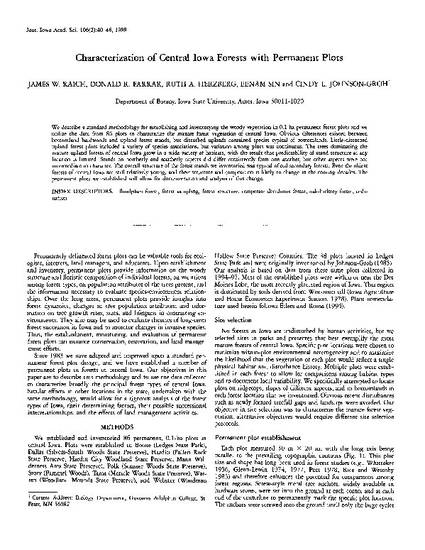
- floodplain forest,
- forest sampling,
- forest structure,
- temperate deciduous forest,
- oak-hickory forest,
- ordination
We describe a standard methodology for establishing and inventorying the woody vegetation in 0.1-ha permanent forest plots and we utilize the data from 86 plots to characterize the mature forest vegetation of central Iowa. Obvious differences existed between bottomland hardwoods and upland forest stands, but disturbed uplands contained species typical of bottomlands. Little-disturbed upland forest plots included a variety of species associations, but variation among plots was continuous. The trees dominating the mature upland forests of central Iowa grow in a wide variety of habitats, with the result that predictability of stand structure at any location is limited. Stands on northerly and southerly aspects did differ consistently from one another, but other aspects were not intermediate in character. The overall structure of the forest stands we inventoried was typical of old secondary forests. Even the oldest forests of central Iowa are still relatively young, and their structure and composition is likely to change in the coming decades. The permanent plots we established will allow for documentation and analysis of this change.
Available at: http://works.bepress.com/jim_raich/13/
